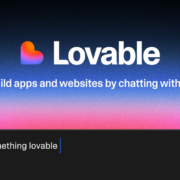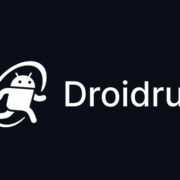Imagine this: you’re at a crowded coffee shop, bingeing on your favorite video tutorials, collaborating on a project with a virtual team, or even presenting a spontaneous idea through an AI-created video. The twist? You’re doing all of it lag- and delay-free. This seamless connection you’re experiencing is thanks to one of the most transformative technologies in recent history—5G. But beyond the buzzwords, have you stopped to think about how 5G is actually changing our mobile tech landscape?
In this article, we’re diving deep into how 5G is not just a faster internet connection, but a revolution in how we interact with the digital world, and especially in learning, creating, and collaborating. From augmented reality (AR) lessons to glitch-free, real-time video streaming, 5G is opening up exciting new possibilities.
What is 5G, Really?
On the simplest level, 5G is the fifth generation of mobile network technology, following 4G LTE. Where 4G already provided us with streaming HD video and browsing at lightning speeds, 5G kicks it up another level. It’s a turbo charge for everything mobile—faster downloads, reduced latency (the lag between sending and receiving data), and the ability to have thousands of devices connected at once without performance drops.
The true potential of 5G is to make possible devices, applications, and experiences that were previously inconceivable. It’s not just about faster internet; it’s about unleashing new potential for entrepreneurs, creators, and students to connect in ways that were once a dream.
5G and Privacy: A New Standard for Security
One of the least thought about but most importantly crucial elements of 5G is how it will impact privacy and security. With so many devices now connected and reliant on real-time data transfers, the necessity to protect our information has never been more paramount. That’s where 5G’s enhanced security features come in.
5G networks come with stronger encryption protocols, which means your personal data is more secure than ever. Whether you’re streaming educational content, creating videos, or even managing personal data across different devices, 5G ensures that sensitive information is kept secure. This is especially crucial as more people are using mobile devices to access online services.
Let’s say you’re concerned about your personal data being collected or shared without your consent. Lead scraping services can be an eye-opener here. Lead scraping services help businesses in collecting potential customer data successfully, but for consumers, knowing about these services is the route to take to manage online presence. With 5G, these kinds of services can now do even better. Higher speeds allow these tools to stream in real time, giving businesses quicker results as well as prompting individuals to be more mindful of their online presence. Whether you’re opting out of data tracking or protecting your identity, the security 5G brings provides an excellent baseline for online privacy.
How Does 5G Impact Mobile Learning?
Now, let’s zoom in on one specific area where 5G is making a huge difference: mobile learning. Learning on the go is a trend that’s on the rise, and 5G is taking it to the next level like never before.
Real-Time Learning with AR and VR
One of the most exciting applications of 5G in mobile learning is in the area of augmented reality (AR) and virtual reality (VR). These have been technologies that have had the potential to revolutionize how we learn for a long time now, providing immersive experiences that go beyond traditional textbooks. However, AR and VR require huge amounts of data to be processed flawlessly, and 4G just wasn’t capable of that sort of demand.
With 5G, however, the dream of real-time, high-quality immersive learning is becoming a reality. Imagine you’re studying biology, and instead of just reading about human anatomy, you’re interacting with a 3D model of the human body, zooming in on different organs, or even witnessing how blood flows through veins. 5G’s speed and low latency make this kind of real-time interaction possible, rendering what could otherwise be static learning into immersive, interactive learning.
Collaborative Learning
Let’s be realistic, education is moving towards more hybrid, virtual, and collaborative models. Whether it is group discussions or team projects being conducted through video conferencing, we require stable high-speed internet to maintain the momentum. That is where 5G enters the picture.
In a 5G-enabled world, learning platforms can support real-time collaboration without stutter or delay. If you’re working on a project with a team across different countries, using tools like video conferencing, file sharing, and document collaboration becomes a seamless experience.
For instance, if you’re a student working on a group assignment, collaborating with others on a shared digital whiteboard, or conducting research using multimedia resources, 5G ensures that everything is synchronized in real-time. No buffering, no lag, just smooth interaction. It feels almost like being in the same room together, despite the miles separating you.
AI-Powered Learning Tools
With the help of 5G, AI tools can be even more robust, providing real-time responses and intelligent assistance on demand. Take an AI video maker, for example. With 5G speeds, an AI video maker can render professional-looking videos and animations in real-time, making it easy for students to produce content. Whether it’s building an animated explainer for a class project or making a presentation, 5G’s fast processing speeds can make these tools even more responsive and user-friendly.
5G and Content Creation: A New Frontier
While mobile learning is one side, 5G is also changing how creators produce and deliver content on the go. For mobile creators, from budding animators to seasoned filmmakers, the features of 5G mean smoother workflows, faster uploads, and more engaging content creation experiences.
Streaming and Live Content Creation
5G enables seamless, high-definition live streaming. If you are a content creator, influencer, or teacher, you can now stream high-quality video in real time without buffering or connectivity issues. This is a game-changer for applications that rely on live engagement, such as live Q\&A or online classes.
Besides, with the help of tools like Adobe Express animator creator, it is possible to animate and share one’s work instantly, creating engaging content that resonates with their viewers. Imagine being able to animate your ideas on the go, editing them in real time, and distributing them to your followers instantly—5G makes it possible.
Remote Collaboration and Cloud Integration
With quicker upload speeds, cloud-based applications are more powerful than ever before. Artists can transfer big files, collaborate on edits, and revise projects in real time. For teams that are collaborating on international projects, this is particularly crucial. From digital artwork to video production to animations, 5G offers the high-speed infrastructure necessary to create and work productively from anywhere.
Key Takeaways: The Future of 5G
As 5G rolls out further, its impact on mobile technology—especially in the realms of learning and content creation—will only grow. The higher speeds, lower latency, and greater capacity that 5G offers open up new doors for students, professionals, and creatives alike.
Whether you’re an educator looking to enhance your teaching with AR or a creator experimenting with the latest video-making tools, 5G is going to make these experiences smoother, faster, and more immersive. The best part? These advancements will continue to evolve, making mobile technology even more integrated into our daily lives. The future of mobile learning, content creation, and collaboration is here, and it’s powered by 5G.









